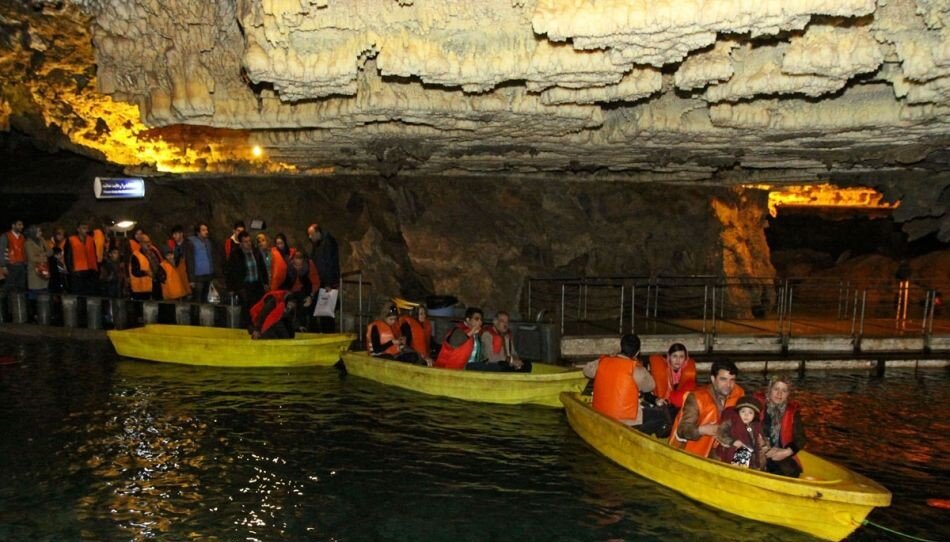Visits to Ali Sadr cave reach record high

TEHRAN – Visits to Ali Sadr reached a record high on June 3 when 9,000 sightseers toured the gigantic water-filled cavern wieldy believed to date from the Jurassic era.
“Some 9,000 tourists visited Ali Sadr Cave yesterday, which is an unprecedented number of the daily visits since the beginning of this [Iranan calendar] year (started on March 21),” the director of the cave site said on Saturday.
The entrance to the lengthy cave is situated some 70km north of Hamadan in west-central Iran, itself a hotspot for avid history buffs, day-trippers, and holidaymakers.
The gigantic cave embraces a huge matrix of sunless channels, ponds, grottoes, and water passages which are stretched along with imposing rock formations and stalactite-covered tops in a span of several kilometers.
Sightseeing there is connected with traversing well-lit labyrinths of waterways via paddle boats, walking on subterranean islets, as well as observing rock carvings of hunting scenes, artifacts, paintings, and vessels that are associated with prehistorical troglodytes.
Some tour operators and tourism marketers say that a standard tour proceeds visitors some 2,000 meters inside the cave, over 1,400 of which are covered by boats that making it one of the longest underground boat trips in the world.
Ali Sadr can be reached after some one hour of riding from Hamadan through the countryside. There are usually shuttles and taxis as well. The most recommended time to pay a visit is early in the morning, particularly on Fridays or holidays when it’s likely to be more crowded.
Iran is geologically a part of the Alpine-Himalayan organic belt. The country features a variety of mountain ranges and hundreds of caves with Ali Sadr, Karaftu, Kataleh Khor, and Quri Qaleh amongst the most notables.
AFM

Leave a Comment